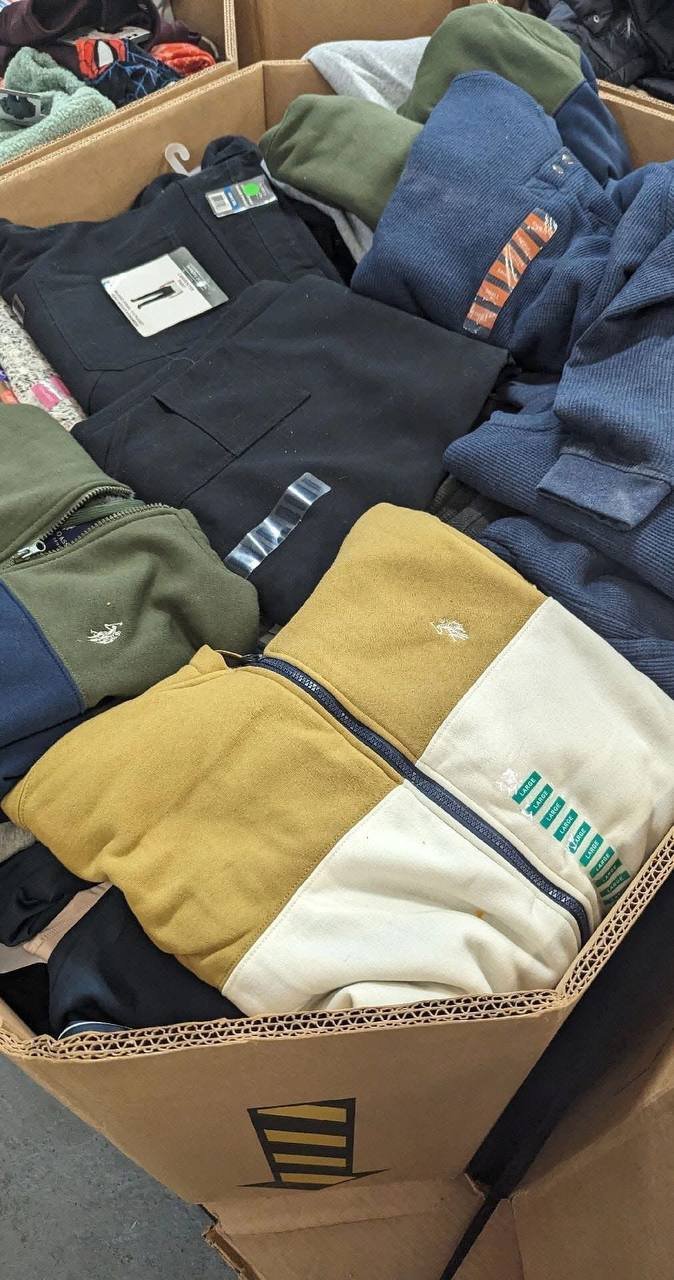Title: Male and Female Clothing: pallets of clothes for sale
Introduction
Clothing is one of the most visible and culturally significant aspects of human life. It serves not only as protection from the elements but also as a medium for self-expression, cultural identity, and social status. The distinction between male and female clothing has existed throughout history, shaped by tradition, social norms, religious beliefs, and evolving fashion trends.
In today’s world, the boundaries between these categories are increasingly fluid, yet understanding their roots provides insight into how we dress and express ourselves.pallets of clothes for sale
Historical Context of Male and Female Clothing
Ancient Civilizations
In ancient societies such as Egypt, Greece, and Rome, clothing was often similar for both sexes in terms of structure—primarily draped garments like tunics and togas—but differences lay in decoration, length, and accessories.
Men’s garments typically signified power and practicality, while women’s attire highlighted modesty and beauty.pallets of clothes for sale
Middle Ages to the Renaissance
The medieval period introduced more distinct clothing differences. Men wore tunics and hose, while women donned long gowns and head coverings.
During the Renaissance, fashion became a symbol of wealth and class. Men’s clothing included padded shoulders and codpieces, whereas women’s dresses featured elaborate embroidery, corsets, and wide skirts.pallets of clothes for sale
18th to 19th Century
The Industrial Revolution brought mass production and greater access to fabric and garments. Men’s fashion focused on tailored suits, waistcoats, and neckties, projecting professionalism.
Women’s fashion emphasized femininity with petticoats, crinolines, and eventually, bustles. Victorian ideals reinforced gender roles through clothing—men as providers and women as delicate homemakers.pallets of clothes for sale
Functional and Symbolic Differences
Functionality
Male clothing traditionally prioritizes practicality and movement. This is evident in workwear, military uniforms, and athletic gear. Female clothing, in contrast, often emphasizes aesthetics, with tighter silhouettes, more embellishment, and less functional design—though this has changed significantly in the modern era.
Symbolism and Gender Roles
Clothing has historically reinforced gender roles. For men, dark colors and simple lines signify authority and seriousness. Women’s clothing often incorporates bright colors, softer fabrics, and intricate designs, symbolizing nurturing, grace, or beauty.
Contemporary Trends and Gender Fluidity
Modern Male Fashion
Today, men’s fashion balances tradition and innovation. Classic suits remain a staple in formal settings, but casualwear has expanded to include slim-fit jeans, designer sneakers, and streetwear. Designers like Virgil Abloh and brands like Balenciaga and Gucci are redefining masculinity in fashion.pallets of clothes for sale
Modern Female Fashion
Women’s fashion is diverse and ever-evolving. From high fashion to fast fashion, women enjoy a wide variety of styles—professional pantsuits, bohemian dresses, minimalist activewear. Fashion icons like Rihanna and Zendaya challenge traditional notions of femininity through bold and often gender-bending choices.
Blurring Boundaries
In recent years, the fashion industry has increasingly embraced gender-neutral clothing. Unisex collections, gender-fluid models, and non-binary fashion lines reflect a cultural shift toward inclusivity. High-profile celebrities like Harry Styles and Jaden Smith wear skirts or dresses in public, defying outdated norms.
Cultural and Global Variations
Asia
In countries like Japan and South Korea, fashion is deeply influenced by history and innovation. The kimono and hanbok are traditional garments with distinct male and female versions, though modern streetwear often blurs these lines.pallets of clothes for sale
Middle East
Clothing is shaped heavily by religion and tradition. Men typically wear garments like the thawb or dishdasha, while women wear the abaya or hijab. Despite the conservative norms, modern Middle Eastern fashion designers are gaining international recognition for innovative yet respectful designs.
Africa
African fashion is known for its vibrant prints and traditional textiles. Men and women both wear garments made from Ankara or Kente cloth, tailored in different styles. There is a rich tradition of ceremonial and everyday attire that reflects tribal and regional identities.
The Psychology of Clothing and Gender Identity
Clothing can affect not just how others perceive us, but how we perceive ourselves. Studies show that what we wear can influence our confidence, behavior, and emotional state.pallets of clothes for sale
For individuals exploring their gender identity, clothing can be a powerful tool for self-discovery and affirmation. Fashion is increasingly viewed not just as a way to conform but as a way to challenge and reshape identity.

Conclusion
The distinctions between male and female clothing are rooted in centuries of culture, history, and social constructs. While functional and symbolic differences still exist, the modern era is witnessing a radical shift toward inclusivity and self-expression.
As fashion continues to evolve, it not only reflects who we are but also shapes the way we view gender, identity, and each other. In this dynamic landscape, clothing is no longer just about what we wear—it’s about what we stand for.pallets of clothes for sale









Reviews
There are no reviews yet.